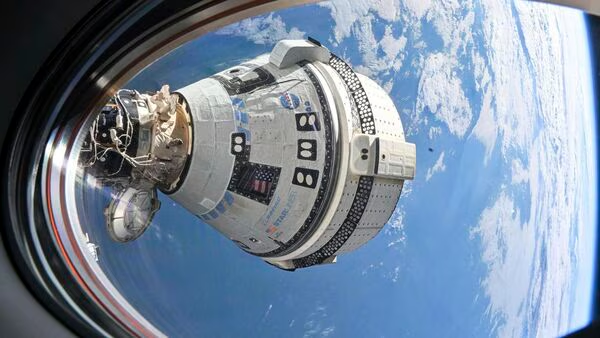| In Short |
| Boeing’s Starliner successfully returned to Earth on September 7, 2024, landing at White Sands Space Harbor, New Mexico, after an uncrewed mission |
| Originally intended to return with NASA astronauts Sunita Williams and Butch Wilmore, technical issues such as helium leaks prompted NASA to bring the Starliner back without a crew |
| The spacecraft safely undocked from the International Space Station and provided valuable data on undocking, reentry, and landing |
| Williams and Wilmore will remain aboard the ISS until February 2025, when they will return on SpaceX’s Crew Dragon as part of NASA’s Crew-9 mission |
| Despite the technical challenges, the mission was seen as a success for Boeing, demonstrating its progress in NASA’s Commercial Crew Program |
It was a great day in the history of space traveling when Boeing Starliner returned to Earth, successfully landing at White Sands Space Harbor, New Mexico, on September 7, 2024. Supposedly, the craft was to make its return with NASA astronauts Sunita Williams and Butch Wilmore, but because of some safety concerns, it was decided that Starliner will be called back uncrewed. This mission represents the most critical milestone within Boeing’s role under NASA’s Commercial Crew Program and really underlines the details of the challenges and successes that go into making space technology among the most advanced.

The Starliner’s Journey
On June 5, 2024, Boeing launched its Starliner under NASA’s Commercial Crew Program, which was supposed to carry astronauts up to the ISS and back to Earth safely. The spacecraft flew to the ISS with Sunita Williams and Butch Wilmore on board for a mission critical to Boeing’s ability to prove that it is capable of sustaining manned flights to space. Within a short time, helium leaks and thruster problems were detected after the dock with the ISS. The possibility of safely returning a crewed spaceship was considered remote due to the technical malfunctions.

Historic Decision: Return Without Astronauts
The space agency pulled the Starliner back to Earth uncrewed, in a decision that underlined its prioritization of safety in space travel for astronauts. Following weeks of troubleshooting and analysis, it was decided that the spacecraft would return sans its crew. It made Starliner the first spacecraft ever to launch with astronauts but return to Earth without them. The incident reveals how hazardous the space travel expedition has been and is going to be in the near future, even by involving private firms like Boeing into crucial assignments.
A Safe and Successful Landing
On September 7, Starliner undocked from the ISS and started its re-entry into Earth’s atmosphere. The spacecraft touched down at White Sands Space Harbor, New Mexico, and sealed the successful end of a very tedious mission. The undocking, reentry, and landing phases provided critical data for Boeing’s engineers to take back to future spacecraft developments. While uncrewed, the landing was considered a success as it gave valuable insight to both Boeing and NASA into the performance of the spacecraft during phases of critical flight.
The Future of the Crew
Sunita Williams and Butch Wilmore, who had been assigned to return on the Starliner, will remain on board the ISS as members of the Expedition 71/72 crew. They will ride a SpaceX Crew Dragon back to Earth in February of 2025, as part of NASA’s Crew-9 mission. It was an unexpected development that necessitated some recasting of NASA’s mission lineups-including reworking the Crew-9 mission to pick up the stranded astronauts.
Implications for Boeing and NASA
The uncrewed return with the Starliner was not expected, but it is nonetheless a major milestone for both Boeing and NASA. If the mission were to succeed in bringing this spacecraft home safely amidst the technical setbacks, this will boost the confidence in the ability of Boeing to offer something toward the commercial spaceflight goals of NASA. While issues with the mission arose, and for that reason, it is most likely that Boeing’s processes and designs will undergo further scrutiny while the company works to make sure future crewed missions are going to be reliable.
Conclusion
The Boeing Starliner mission personifies the trials and triumphs of modern space flight. The landing, though uncrewed, stands as a significant milestone for Boeing and NASA’s Commercial Crew Program, with lessons learned there that will help carve the future of commercial spaceflight. With safety paramount for its astronauts, a successful return at hand, Boeing will now retool Starliner for missions ahead, assuring human spaceflight shall rise in the years to come.
For Latest News Updates Click Here
